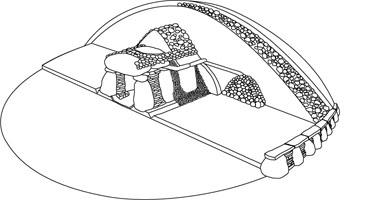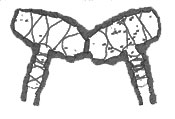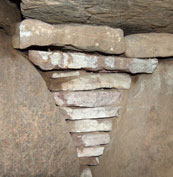How was a passage grave chamber built?
The megalithic tombs were masterpieces of construction that required experience accumulated over generations! The construction of the passage graves was so well thought out that the monuments have been able to stand intact until the present day.
The spaces between the uprights were filled with flat slabs of sandstone. The spaces between these were sealed either with clay, a chalky pulp or with sheets of birch bark. Clay and layers of crushed flint were applied to the outside of the chamber. The capstones of the chamber were sealed with stone-packing and crushed flint. Then a layer of clay was applied, which was in turn covered with stone slabs. The chamber was thus sealed and could remain dry inside.


The so-called double passage graves consist of two chambers built together in one mound. This is also the case of the double passage grave Troldstuerne in the district of Odsherred.

The dry walls that fill out the spaces between the large upright stones of the chambers, like this example from Knudsskov near Vordingborg, are a very characteristic element in the construction of passage graves.
